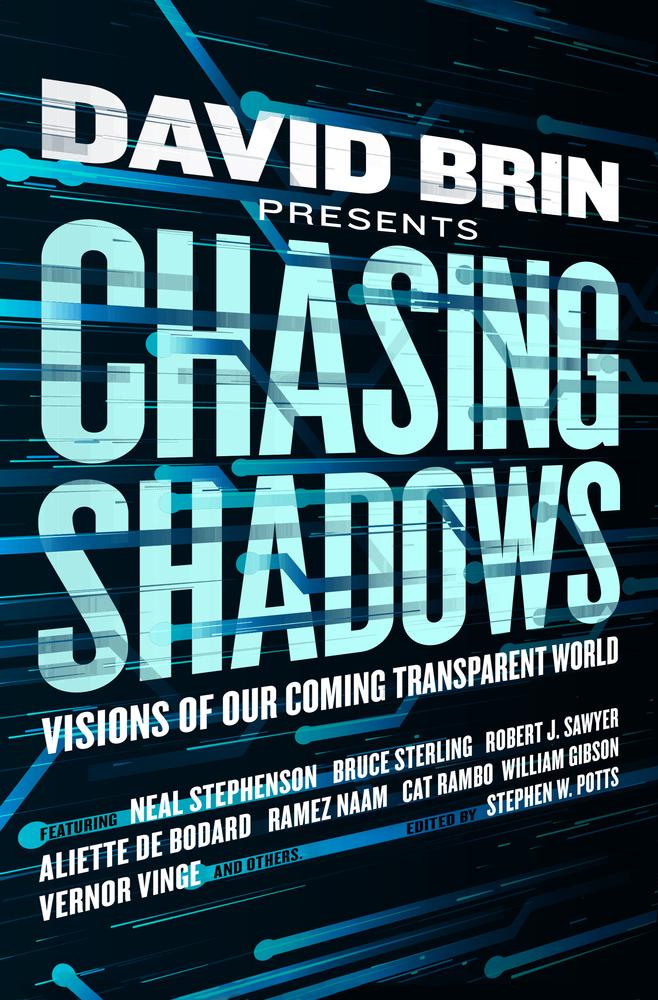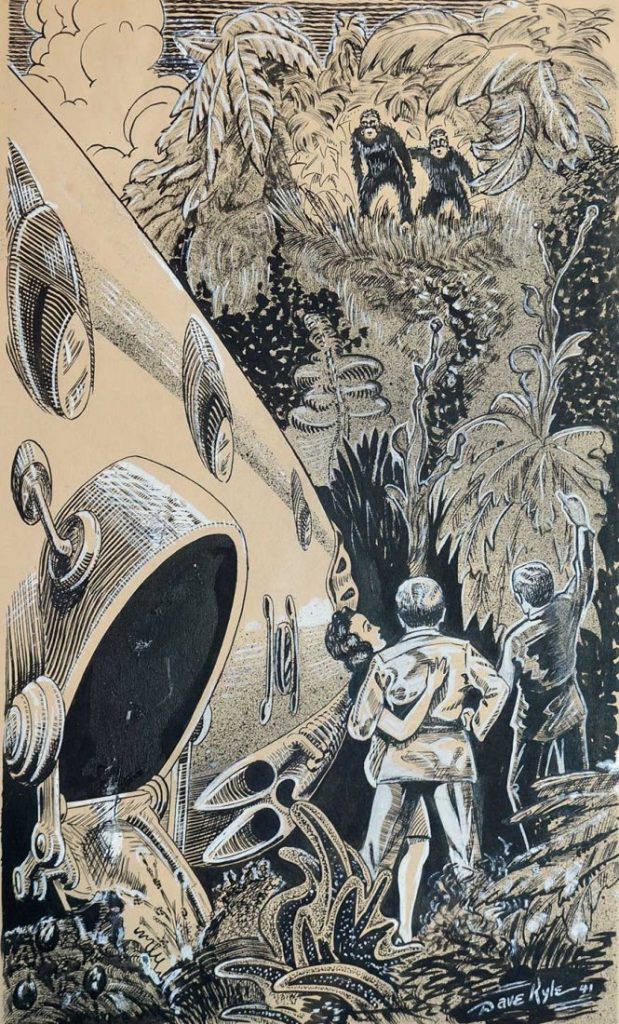(1) GAME OF THRONES AND WORLDCON 75 MAKE NEWS. George R.R. Martin mentioned in his blog the other day (“Tick, Tick, Tick”) that Game of Thrones’ David Benioff and D.B. Weiss are coming to Worldcon 75 in Helsinki for the Hugo Awards ceremony.
Chair Jukka Halme confirmed it and the story made it into Finland’s biggest newspaper (Helsingin Sanomat). You can get all the details there…if you read Finnish: “Game of Thrones -sarjan tekijät tulevat vierailulle Suomeen elokuuss”.
(2) TO WHOM IT MAY CONCERN. The July 2 New York Times Magazine has an article by Steven Johnson called “Greetings, E.T. (Please Don’t Murder Us)” about the search for extraterrestrial life and the debate about whether we should wait for aliens to contact us (the “SETI” approach) or actively send messages to outer space (a method known as “METI”). Johnson interviews David Brin, who is fiercely opposed to actively broadcasting messages of our existence to other worlds:
Before Doug Vakoch had even filed the papers to form the METI nonprofit organization in July 2015, a dozen or so science-and-tech luminaries, including SpaceX’s Elon Musk, signed a statement categorically opposing the project, at least without extensive further discussion, on a planetary scale. ‘‘Intentionally signaling other civilizations in the Milky Way Galaxy,’’ the statement argued, ‘‘raises concerns from all the people of Earth, about both the message and the consequences of contact. A worldwide scientific, political and humanitarian discussion must occur before any message is sent.’’
One signatory to that statement was the astronomer and science-fiction author David Brin, who has been carrying on a spirited but collegial series of debates with Vakoch over the wisdom of his project. ‘‘I just don’t think anybody should give our children a fait accompli based on blithe assumptions and assertions that have been untested and not subjected to critical peer review,’’ he told me over a Skype call from his home office in Southern California. ‘‘If you are going to do something that is going to change some of the fundamental observable parameters of our solar system, then how about an environmental-impact statement?’’
(3) KAISER. JoAnn Kaiser reopened The Magic Door within a week of the death of her husband, Dwain, reports David Allen in the Inland Valley Daily Bulletin — “Pomona bookstore’s reopening binds community after owner’s death”.
But Saturday she was revived, buoyed by her family and friends. A 12th anniversary sale that had been set to end July 5 instead continues, with all merchandise 30 percent off. The sale pricing may continue indefinitely.
Her goal is not to keep the store long-term. For one thing, she’s 82. But she wasn’t going to let the tragedy mark the end of Magic Door.
“I could have locked the door. I’m not a door-locker,” JoAnn Kaiser told me firmly. “The plan is to get the books he loved to the people who want them, who need them. He didn’t want his books dumped. He wanted them to go to somebody.”
…The bookstore fit the Arts Colony like a glove. “It was just part of the ambience of downtown Pomona,” customer Bill Martinez told me outside after buying two books. (I recognized “The Best of S.J. Perelman” as one I had sold Dwain Kaiser a few weeks ago.)
“Everybody knew them,” Martinez said of the Kaisers. “They were part of the community, and one of the best parts.”
Mayor Tim Sandoval has visited to offer his condolences and at Monday’s City Council meeting asked for a moment of silence in Dwain Kaiser’s memory.
…Not every customer knew of Dwain Kaiser’s death. Monica Berrocal was saddened when I told her. She liked to bring her children there. Once JoAnn Kaiser gave her son a Thomas the Tank Engine book. “They were always so kind,” she said.
Hino, a Pomona High graduate, greeted customers warmly from Dwain Kaiser’s usual seat and thanked them for coming. A hospital executive, he confided that this was his first retail job. He’ll be there helping out as he can, as will his sister, Kim.
“It’s very different from what I normally do,” Hino told me cheerfully. “I’m enjoying it. It’s nice. And it’s good being back in Pomona.”
…“Pomona’s resilient. I think tonight shows the best of Pomona,” JoAnn Kaiser said.
The store has a lot of books, and there are more in storage that Dwain Kaiser, due to age and mobility issues, had not seen in years. JoAnn Kaiser, with help, hopes to dig them all out, put them on the shelves and get them homes before shutting the doors for good.
“He had a mad love affair with books,” she said of her husband of 32 years.
“The support will fade. I know that. But I’m doing what he would have wanted.”
(4) BEAU GESTE. Deadpool gracefully yielded his place on the box office record lists to Wonder Woman:
The Merc may be filthier, but her B.O. is stronger. Congrats #WonderWoman. pic.twitter.com/jhP1hRAKlY
— Deadpool Movie (@deadpoolmovie) July 11, 2017
(5) FOLLOW THE MONEY. What does John Scalzi have in common with Milo Yiannapoulos? Probably not much, except this one thing – Bookscan doesn’t count all their sales. Scalzi explains in “How to Screw Up a Triumphant Bestselling Debut”.
Here’s the deal: Yiannopoulos has asserted his book’s opening week sales were on the order of 100,000 copies. Contrasting this, Nielsen Bookscan, the service which tracks physical book sales via many (but not all) booksellers, including Amazon, has his first week sales as 18,268 in the US (and — heh — 152 in the UK). As most of us probably know, 18,000 is less than 100,000.
Or is it? Because here’s the thing about Bookscan — it doesn’t in fact track all sales of a book. It doesn’t track eBook sales, for example, nor does it track audiobook sales. Nor does it track sales from some small independent booksellers, who might have not signed up to be Bookscan-reporting retailers. As a result, depending on how much you sell in other formats, and where you sell your books, Bookscan can massively underreport your total sales.
I know this because that’s what Bookscan does with me. A couple of years ago I tracked the sales of the hardcover era of Lock In (which is to say, all the sales reported while the physical book was only available in hardcover). For the time it was in hardcover, Bookscan reported 11,175 hardcover sales in the US. However, overall the book sold about 22,500 copies in hardcover and about 87,500 copies across all formats (hardcover, ebook, audio).
In all, Bookscan recorded roughly 12.7% of my total sales. Which is not a lot! If Yiannopoulos were seeing a similar sort of ratio, based on his physical copy sales, he could indeed have sold something on the order of 100,000 copies of his book in the first week. He might not be lying.
With all that said, on further examination, this is why I very strongly suspect that Yiannopoulos has not, in fact, sold, 100,000 copies of his book in the first week…
(6) WE GET LETTERS. CBR.com tells you about “15 Times Fans Changed Comic Book History”.
15. INVISIBLE WOMAN’S POWERS
Other comics had certainly had an element of fan interaction in them before Marvel Comics, but Stan Lee took things to a whole other level when he began the “Marvel Age of Comics” in the early 1960s. Lee made fan interaction a key element of the success of Marvel. In Fantastic Four #11, Lee and Jack Kirby even worked in actual letters to the series into the comic book, having the characters respond to frequently asked questions.
Infamously, though, that issue also included their attempts to defend the Invisible Girl from all the hate mail she got for being seemingly useless (their “defense” was hilariously conceived – “She inspires them! Like Lincoln’s mother!” but still). They got enough of those complaints that they decided to give her invisible force fields in Fantastic Four #22, eventually leading to her becoming the most powerful member of the team!
(7) TODAY IN HISTORY
- July 14, 1999 — Muppets From Space screened theatrically
(8) A KEY TO WRITING. Fantasy-Faction’s Aaron Miles gives tips: “On Character Development”.
An understanding of character development techniques can bring many benefits to your writing and help improve your work, so let’s start by establishing what it is. In essence character development is the change in nature of a character brought about by events in the narrative, it can be subtle or pronounced, and it may happen over a long period or reasonably quickly. The difficult part is actually showing it on the page, and just as importantly, showing it’s justified. For a character to change their whole nature for no apparent cause or just because the plot requires it is sloppy writing and obvious to the reader. While the methods and timeframe may very per character, a well-constructed piece of character development will follow a set formula.
Establishment
In order to show change an author must first establish an original nature to change from. When the author introduces the character they must detail their personality, opinions and mannerisms in order to make us view them as a believable and realistic person, particular focus should be given to any traits that might be relevant to later development.
For example, if you’re planning to have a cowardly character show a moment of bravery and save the day at the end of the novel, then you need at least a couple of scenes showing his cowardice in action. It could be crumbling in an argument with a shopkeeper, avoiding a hostile boss, or literally running away from a fight. Before the development even begins the author must cement a character’s nature quickly in the reader’s mind, this can be done with a variety of traditional characterisation methods and tricks and ideally is accomplished as quickly as possible. Without this establishment there is no baseline to measure development against and the change will lack meaning. Think about our introduction to Daenerys in A Game of Thrones as she is appraised and abused by her brother:
“You don’t want to wake the dragon do you?” His fingers twisted her, the pinch cruelly hard through the rough fabric of her tunic. “Do you?” he repeated.
“No,” Dany said meekly.
Without seeing the timid girl she was at the start of the story her later accomplishments and changes would be far less moving for the reader, but after Martin has shown us some early scenes of her life the reader gains a greater perspective to realise how pronounced her development is through several books.
(9) ECLIPSE VIEWING AND ECLIPSE CON. Hopkinsville, Kentucky is reputed to be the “point of greatest eclipse” for the 2017 Solar Eclipse. Just call them Eclipseville.
We’re already planning for your visit; our southern hospitality will make you and your group welcome, and your Solar Eclipse experience memorable. So, whether you are a bona fide eclipse chaser, or just looking for the best place to experience Mother Nature’s rare eclipse show, we invite you to be with us in Hoptown. Our community’s big enough to provide everything you’ll need and want for the 2017 Eclipse weekend experience… we’re planning a big Friday-Sunday Eclipse celebration before the sun disappears – for two minutes and forty seconds – at 1:24:41 pm CT on Monday, August 21, 2017.
And that’s where you’ll find Eclipse Con “raising awareness and funds for the Boys & Girls Club” with nationally recognized celebrities and vendors in the genres of cartoons, comics, anime, cosplay, sci-fi and superheroes
August 19-20, 2017
James E. Bruce Convention Center
Currently Confirmed Guests:
- Samantha Newark, best known for her beloved voice-over work as the speaking voices of “Jem” and “Jerrica” on the wildly popular cartoon series Jem and the Holograms;
- The Walking Dead’s Santiago Cirilo, who was also a member of the 101st Airborne Infantry and was stationed at Fort Campbell prior to his acting career;
- and the award winning creator of sci-pulp series, VIC BOONE, Shawn Aldridge.
(10) IT’S DARK OUT. Mental Floss explains “How Eclipse Chasers Are Putting a Small Kentucky Town on the Map”.
Today, James McClean is an eclipse chaser. That’s not the name of some cute weekend hobby. It’s a lifestyle. For the past two decades, McClean, a professional photographer, has given up everything resembling a normal life. He has no permanent home base, opting instead to trot the globe, work odd jobs, and live on tight budgets to see solar eclipses.
Every. Single. One.
McClean has made a living as a cartographer and an aurora borealis tour guide. He’s lived on an island near Sitka, Alaska and taught photography. (When he needed Internet, he’d kayak an hour and a half to the nearest library.) He’s spent summers in Germany doing archaeology and winters in Sweden constructing, and living in, a hotel made of ice. He’s slept in bamboo huts on top of volcanic islands, backpacked through Egypt, and trudged the snows of Svalbard, Norway. One time, in Indonesia, he was invited to sip coffee in a sultan’s palace.
(11) BERNECKER OBIT. The Walking Dead suffered another loss today when stuntman John Bernecker, seriously injured in a stunt (he reportedly missed the landing mattress while doing a 20-ft. fall), was declared brain-dead. There are many tweets with condolences from industry professionals included in the linked article.
(12) OUT, OUT DARNED SPOT. Nautilus interviews UC Berkeley’s Philip Marcus, a computational physicist and a professor in the mechanical engineering department, about “Why Jupiter’s Great Red Spot Refuses to Die”. Turns out there’s quite a bit of work been done on this.
Why did it start on Jupiter and not somewhere else?
Here on Earth, if you fly over the ocean, you can almost certainly tell when there’s an island below you because there’s a cloud hanging on top—topographic features often pin clouds to themselves. But there’s no solid surface on Jupiter until you get down to a very small core. It’s basically a ball of fluid. You don’t have differential heating between continents and oceans. You don’t have winds interrupted by mountain ranges. You don’t have all that messy stuff, so it’s got a really well organized set of jet streams on it. Once you’ve got jet streams, vortices just form naturally. You’ve got winds going in opposite directions, shearing against one another. Think of a ball bearing between two oppositely moving walls. The walls make the ball bearing spin, and the oppositely moving jet streams on Jupiter make the air between them spin. Vortices between jet streams are resistant to anything smashing into them. If I create a vortex in a bathtub and I smash it, the vortex is generally gone. If I do a simulation of a big Red Spot on Jupiter sitting between zonal winds and I smack it, try and break it in two, it’ll come back together. So I think of jet streams as gardens in which you want to grow vortices.
(13) DO PANIC. Two Travelers from Galactic Journey praise a low-budget Roger Corman production. You know, somebody should make Roger a Worldcon guest of honor someday — “[July 14, 1962] Cause for Alarm (Panic in Year Zero – a surprise summer hit film!)”.
The latest example is a tiny-budgeted film by schlockhouse American Independent Pictures, Panic in Year Zero. The Young Traveler and I saw Panic at opening night, July 5. There was a big promotional event headlined by Frankie Avalon, and I understand the picture made back its budget in just the evening L.A. showings! The film has already generated some positive buzz, and I suspect it’ll be the surprise hit of the summer.
Produced by the master of the independents, Roger Corman, Panic opens with a literal bang: a typical Angelino family out on a drive toward a camping vacation sees a bright flash as their home town of Los Angeles is wiped out by Soviet bombs. It soon becomes clear that the attack is widespread and civilization is about to deteriorate. Our viewpoint family must brave its way to safety, securing adequate supplies and a defensible shelter, before the walls of society collapse.
(14) FORK YOU. The January 30 New Yorker article by Raffi Khatchadourian, “The Movie with a Thousand Plotlines”, is about efforts in Hollywood to create films that have alternate endings that viewers can choose among. The article focuses on efforts by Daniel Kwan and Daniel Scheinert, who directed Swiss Army Man, to come up with films that fit this template. The sf news is that both War Games and The Twilight Zone have had rights sold for interactive television series that are under development.
Treehouse is an intuitive program for a nonintuitive, nonlinear form of storytelling, and Bloch is adept at demonstrating it. In his office, he called up a series of video clips featuring the model Dree Hemingway sitting at a table. Below the clips, in a digital workspace resembling graph paper, he built a flowchart to map the forking narrative—how her story might divide into strands that branch outward, or loop backward, or converge. At first, the flowchart looked like a “Y” turned on its side: a story with just one node. “When you start, it is always ‘To be, or not to be,’ ” he said. The choice here was whether Hemingway would serve herself coffee or tea. Bloch dragged and dropped video clips into the flowchart, then placed buttons for tea and coffee into the frame, and set the amount of time the system would allow viewers to decide. In less than a minute, he was previewing a tiny film: over a soundtrack of music fit for a Philippe Starck lobby, Hemingway smiled and poured the beverage Bloch had selected. He then returned to the graph paper and added a blizzard of hypothetical options: “You can decide that here it will branch again, here it goes into a loop until it knows what to do, and here it becomes a switching node where five things can happen at the same time—and so on.”
As Bloch was getting his company off the ground, a small race was under way among like-minded startups looking for financial backing. In Switzerland, a company called CtrlMovie had developed technology similar to Interlude’s, and was seeking money for a feature-length thriller….
The article also discusses Mr. Payback, a 1995 interactive film about a cyborg – script by Bob Gale! – that was panned by Roger Ebert.
Early experiments in interactive film were likewise marred by shtick. In 1995, a company called Interfilm collaborated with Sony to produce “Mr. Payback,” based on a script by Bob Gale, who had worked on the “Back to the Future” trilogy. In the movie, a cyborg meted out punishment to baddies while the audience, voting with handheld controllers, chose the act of revenge. The film was released in forty-four theatres. Critics hated it. “The basic problem I had with the choices on the screen with ‘Mr. Payback’ is that they didn’t have one called ‘None of the above,’ ” Roger Ebert said, declaring the movie the worst of the year. “We don’t want to interact with a movie. We want it to act on us. That’s why we go, so we can lose ourselves in the experience.”
(16) IN MOLT. Joe Sherry has reached the artist categories on his Hugo ballot: “Watching the Hugos: Professional and Fan Artist” at Nerds of a Feather. Too bad it includes a slam against Steve Stiles, one of the greatest fan artists of all time.
(17) PINCH HITTER. Tor.com’s Emily Asher-Perrin discovered something at the movies: “Star Trek IV Now Exists in the Same Universe As All Marvel Films Thanks to a Special Cameo”.
When nerds make movies, beautiful things can happen. In this case, the fact that MCU producer Kevin Feige happens to be a big fan of Star Trek IV led to a cameo that now places a character from The Voyage Home into Spider-Man: Homecoming.
I won’t spoiler her spoiler – you’ll have to click through.
(18) UNEXPECTED CASTING. The Big Bang Theory’s Melissa Rauch will voice Harley Quinn in the upcoming Bruce Timm animated film Batman And Harley.
CinemaBlend is all in favor:
As far as casting decisions go, Melissa Rauch is a fairly pitch perfect choice for the role of Harley Quinn. Not only does she have a high-pitched voice that’s very reminiscent of Arleen Sorkin and Tara Strong; she also has developed a reputation as an actress through her work in a show predicated on the passion and intensity of geek culture. Something tells us that all of those years on The Big Bang Theory have given her an understanding of how fans will respond to her performance, thus ensuring that she will deliver the best possible Harley Quinn.
(19) POETRY CORNER. Johnstick joined the throngs who have been raining limericks in the File 770 comments section.
As prophets of eld have foretold,
and pixels of all hues have scrolled,
Death takes the clever
and redshirts forever,
plus all those whose glister’s not gold!
[Thanks to John King Tarpinian, JJ, Cat Eldridge, Martin Morse Wooster, and Terhi for some of these stories. Title credit belongs to File 770 contributing editor of the day Andrew.]










